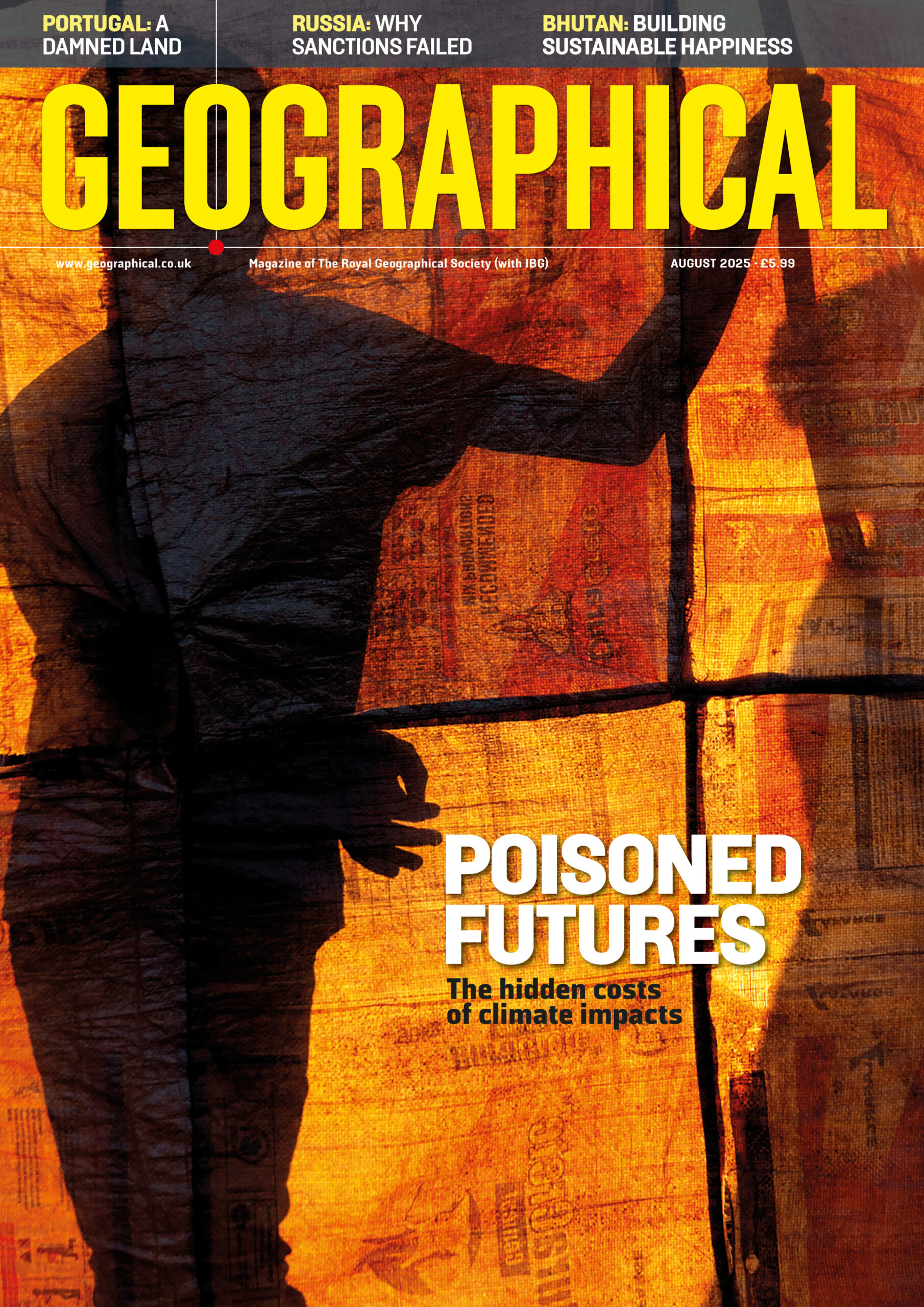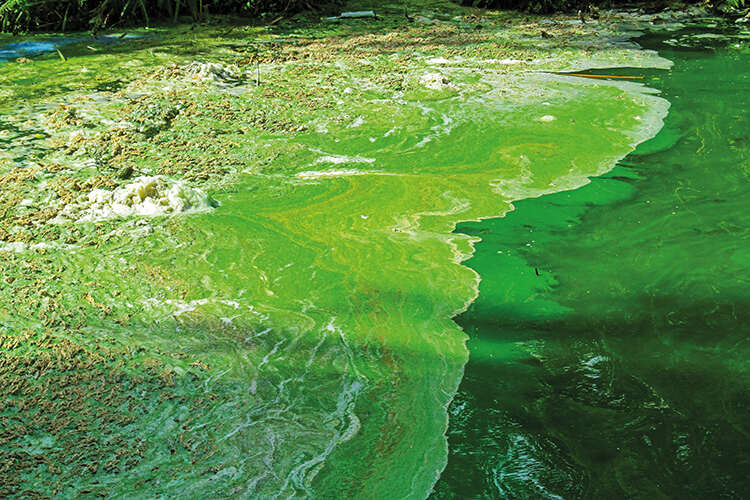
Each year, billions of tonnes of raw sewage are pumped into England’s rivers and coastal waters. But the water companies aren’t the only ones to blame. Mark Rowe reports on a complex problem that we’re failing to solve
Flowing for just 65 kilometres, the River Windrush seems at first glance absurdly, stereotypically idyllic. Rising in the Cotswolds, it meanders through lowland meadow habitats, designated in places as sites of special scientific interest and nature reserves, before eventually feeding into the Thames. Yet this small, quintessentially English river is emblematic of the enormous problems that confront our waterways. In 2020, Thames Water reported spilling untreated sewage for 3,644 hours on 228 occasions from four of the sewage works on the river. In 2022, across England, according to the Environment Agency (EA), raw sewage was pumped into waterways via combined sewer overflows (CSOs) for 1.75 million hours – 825 times a day on average. Images of visibly brown waters caused unambiguously by sewage have lately been captured across the UK. The EA data indicated that United Utilities, which covers the North West, released sewage the most often, for nearly half a million hours. Last winter, the government admitted that it had no idea how many beaches in England were shut due to sewage pollution in 2022.
A House of Commons Environmental Audit Committee 2021/22 report was damning, declaring that ‘rivers in England are in a mess’, thanks to ‘a chemical cocktail of sewage, agricultural waste and plastic.’ In 2021, every freshwater body in England failed chemical standards and only 16 per cent were classed as being in good ecological health. The government’s target in its 25 Year Environment Plan for 75 per cent of waterbodies in England to be in good overall condition ‘as soon as possible’ (ahead of a 2027 target for all waters) appears highly likely to be missed.
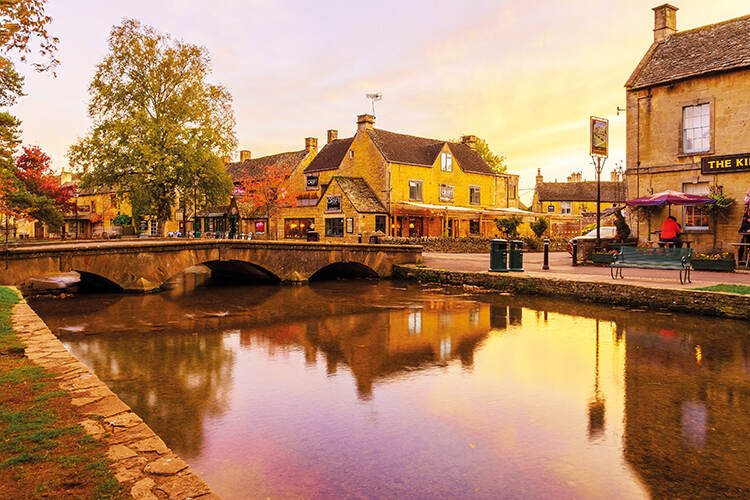
The River Windrush
In 2020, Thames Water dumped untreated sewage for 3,644 hours on 228 different occasions from four different sewage works along the 65-kilometre length of this bucolic tributary of the Thames located in the heart of the Cotswolds.
Underinvesting and overpaid
Inevitably, and perhaps rightly, since raw sewage shamelessly pumped into our waters provokes such visceral outrage, public ire has focused on private water companies. As the audit committee report put it: ‘Water companies appear to be dumping untreated or partially treated sewage in rivers on a regular basis, often breaching the terms of permits… It’s hard to avoid the conclusions that successive governments, water companies and regulators have grown complacent and seem resigned to maintaining pre-Victorian practices of dumping sewage in rivers.’
The anger was reflected in a survey this spring by Surfers Against Sewage (SAS), which found that 85 per cent of UK adults support a ban on bonuses for water company CEOs who fail to adhere to minimum environmental standards. In May, SAS unveiled ‘the Floater’, an eye-popping surfboard made using raw sewage.
The same week, the water companies issued an apology for the repeated sewage spills and promised to invest £10 billion this decade to stem the deluge of CSOs. Many campaigners were far from impressed, pointing out that the nine English water companies paid out £1.4 billion in dividends for shareholders last year and in the 30 years since the companies were privatised, dividend payments have averaged £3 billion a year. It was also noted that the previously debt-free companies have funded these payouts by running up debts now totalling £54 billion.
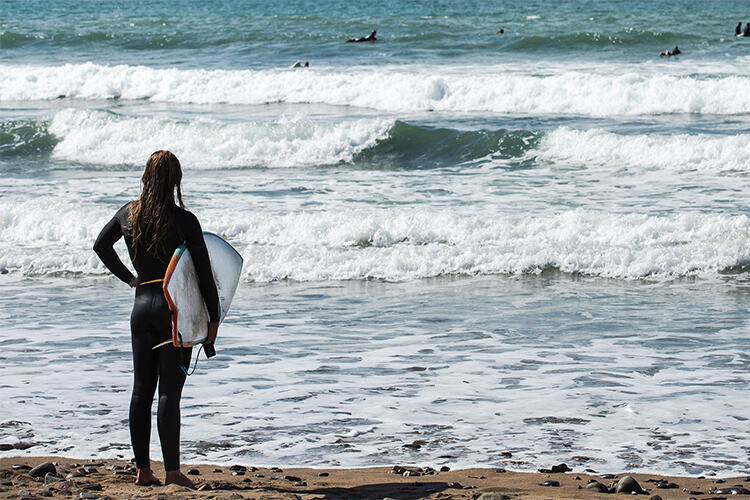
Surfing UK
The average water-goer accidentally ingests 30 millilitres of water on any venture into the sea. Surfers are particularly at risk: the best surfing conditions – after storms, in high winds – are also the times most likely to see sewage dumping. A study, perhaps unsurprisingly, found that surfers ingest and collect three times as much faecal matter on their wetsuits and skin as control groups. ‘Surfers are paddling into waves, often with their mouths open, so ingest more than someone just going for a dip,’ says Surfers Against Sewage, whose data indicate that, on average, a surfer exposed to E. coli and other bacteria gets sick for two days and there have been related hospitalisations.
The government belatedly took action, promising to enshrine in law a water company target for effectively ending sewage dumping by 2050, something that will require the companies to cough up £56 billion.
However, it hasn’t insited on a much-called-for reform to make it mandatory for the water companies to reveal the volume of raw sewage being dumped, rather than just the number of discharges and the length of time they lasted. A study by Professor Peter Hammond, an expert on sewage discharges who has previously given evidence to the House of Commons on the issue, looked at 30 sewage treatment plants in 2020 and revealed they dumped 11 billion litres of raw sewage in 2020 – ten times more than the official estimates.
‘We are in a pretty bad state,’ says Ali Morse, water policy manager for the Wildlife Trusts. ‘We hear it said our rivers have never been so clean since the Industrial Revolution. Perhaps we have cleaned up some of the worst pollutants from that time, but in terms of current pollutants, things are probably worse than ever.’
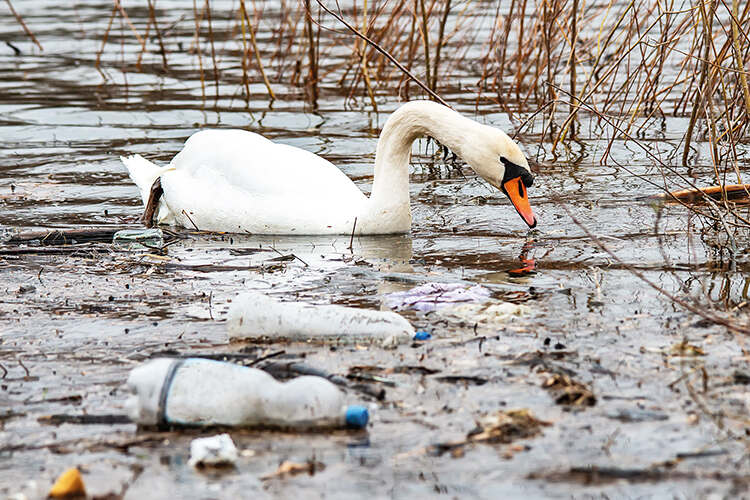
The River Nent, a tributary of the Tyne, for example, is the second most metal-polluted river in England – a legacy of coal mining that went on until the 20th century – with high concentrations of cadmium, lead and zinc, which are toxic to fish and the insects they feed on. In the 1950s, Agent Orange was still deployed as a herbicide on farms and washed into rivers.
The scale of the challenge is so big because the problem is chronic and ingrained. ‘A lot of recent headlines are driven by people belatedly realising what has been going on for a very long time,’ says Mark Lloyd, CEO of the Rivers Trust. ‘CSOs have been an issue since the beginning of my career, 30 years ago. Covid has amplified the practice – everyone was locked down and, perhaps for the first time, explored their local rivers and environment – and they came across wet wipes and sanitary towels. The problem is, we have had more development, more people, and that equals more sewage and greater pressure than there used to be. The maintenance of assets has not been prioritised.’
Raw anger
Surfers Against Sewage was set up in 1990 because ‘surfers in Cornwall were getting sick of getting sick – sewage was just dumped in the sea without any form of treatment,’ says policy officer Louise Reddy, ‘and that was happening right across the country.’ Campaigning led to regulations requiring water companies to treat sewage before discharging to water courses, but the 1991 Water Industry Act contained a clause allowing discharges in extreme storm conditions. ‘We felt that was reasonable,’ says Reddy, ‘but companies are using it as an excuse all the time.’ SAS identified data that showed that in 2021, water companies discharged raw sewage on 143 occasions when there had been no rainfall for the two previous days. The only thing missing from public opprobrium is for water company bosses to walk barefoot through the streets wearing sackcloth and ashes.
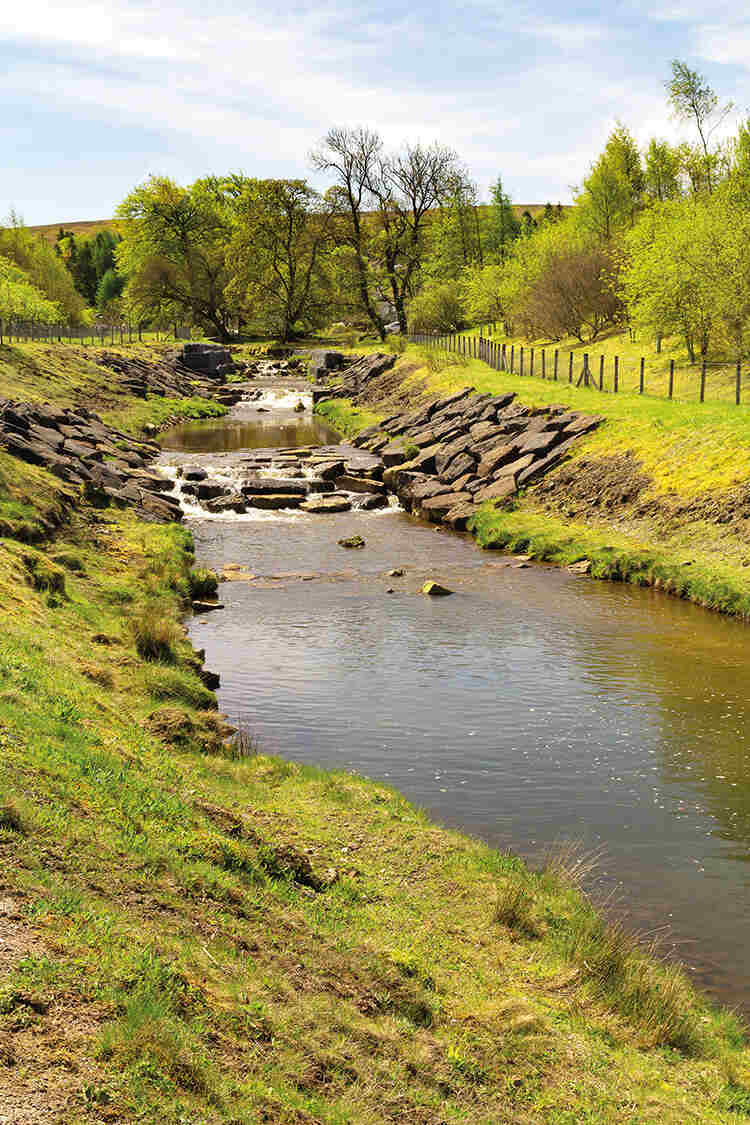
The River Nent
This tributary of the Tyne is the second most metal-polluted river in England – a legacy of coal mining in the area. It has toxic levels of cadmium, lead and zinc. Many of the rivers flowing into the Tyne are heavily polluted, creating dangerous levels of metals in its estuary’s sediments.
Farming intensively under the radar
Yet raw sewage and CSOs account for somewhere between four and 12 per cent of the reason why our rivers are in poor ecological health; they aren’t even the primary cause of the dire state of British waterways. Treated effluent (sewage that has been inadequately treated and still contains phosphates and nitrogen) contributes 35 per cent; highway run-off (brake fluid, sulphates from combustion, particulates from tyres) comprises 15 per cent. The largest factor, responsible for 45 per cent, is agriculture. ‘People’s perception is of fat cat bosses drawing huge bonuses while pumping sewage straight into rivers and seas,’ says Lloyd. ‘But there are so many significant factors – it’s just that others are less visceral, less visually horrific.’
Agriculture, by and large, continues to avoid scrutiny. Much of our drinking water is sourced directly from rivers, streams and reservoirs. To get there, it travels across a farmed landscape, collecting farmyard manure, artificial fertilisers, herbicides and pesticides, and eroding tonnes of valuable soil that pollutes and silts up our waterways. The parliamentary audit committee has been scathing, deriding an industry where ‘farm slurry and fertiliser runoff is choking rivers with damaging algal blooms.’

‘Environment Agency data shows clearly that agriculture is the major reason for ecological failure of rivers,’ says Morse. ‘We are consistently building pressure on our rivers. Phosphates and nitrates are used as fertilisers. Where we find them to excess, they trigger spurts of nutrient-hungry species such as algae, which smother everything and block out sunlight. They outcompete native plants and affect small fish at the bottom of the food chain, which in turn affects larger fish and bird species that prey on them.’
Once that nutrient pulse has passed through, the algae die, which leaves decomposing matter that requires lot of oxygen to break down. The resulting hypoxic conditions lead to the death of fish, insects and other invertebrates.
The impact of chemicals is a lot less obvious, Morse adds, and tends to be long term. ‘Chemicals trigger changes in the behaviour of fish, which can be more aggressive, or reduce their reaction times and affect reproductive ability.’
Every aspect of farming is having a negative impact, argues Lloyd. ‘We’ve seen an intensification of production, with more livestock on land that cannot support the waste that they generate. Slurry stores are not maintained or expanded, so slurry leaks out or gets sprayed onto fields simply to get rid of it. If there is no crop to take it up, the slurry just gets washed into rivers along with soil.’

Pollution from crops and livestock
Maize is a particular problem. According to DEFRA data cited by the Soil Association, 50 years ago, 8,000 hectares of maize were planted in England; the figure is now upwards of 183,000 hectares. Traditionally a spring crop, it’s now often cut much later in the year, leaving bare fields of mud and pesticides to be compacted and washed off into rivers in winter.
Poultry is another issue. Free-range chickens on huge farms plod about and defecate onto a compacted surface of soil. ‘Many farms have been established around the Upper Wye catchment in mid-Wales, where it is uneconomical and impractical to transport the manure out,’ says Lloyd. Pigs and sheep have similar impacts. ‘Often, all this takes place in inappropriate landscapes, on clay soils in steep-sided valleys, perfect for washing slurry and chemicals into water courses.’
The problem can be exacerbated because many rivers have been turned into culverts, funnelling soil and pollutants downstream. The scale of this is such that there are increasing concerns that runoff from farming is contributing to anti-microbial resistance.
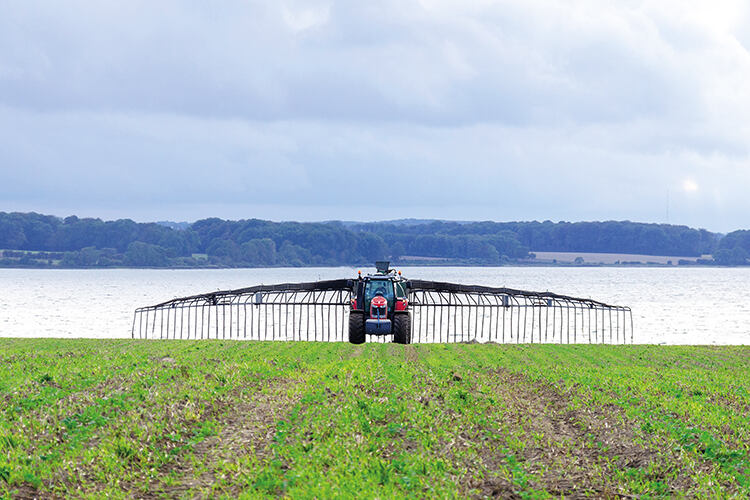
More stringent testing
Sixteen per cent of UK surface water – rivers, lakes, canals, estuaries and coasts – is in good ecological condition. When it comes to chemical standards, the figure for every single body of freshwater is zero per cent, says Morse. ‘This does have to do with more stringent monitoring in the UK, which was enhanced in 2019 to incorporate sediments, mussels, crustaceans – they found pollution everywhere,’ she explains.
Across Europe, as these equivalent enhanced monitoring processes are implemented, Morse expects the same problems to prove, to a greater or lesser extent, ubiquitous. ‘Most nations in Europe are fairly comparable in terms of population density, farming intensification, we face similar problems,’ she says.
Lloyd is inclined to agree but feels this should not let the UK off the hook. ‘We all face the same common issues across Europe and around the world, but it does feel like the UK is dealing with this spectacularly badly,’ he says.
A look in the mirror
Yet there’s a harsh, often unspoken truth: for all we, the public, justifiably pillory water companies (and to a far lesser extent the farming sector), a degree of self-awareness might be helpful. Less water wastage, says Morse, would mean less pollution and pressure on treatment plants. ‘It’s also about us, the public,’ she says. ‘We throw wet wipes down the toilet, pour grease down the sink, and these cause huge blockages. There’s an element of personal responsibility.’
At the same time, further legislation would help us all do the right thing. Morse is calling for more long-term regulation to mitigate sources of water pollution that we’re seemingly locked into. One major issue is that of chemicals in sofa fabrics, which get into our clothes, then into our washing machines and ultimately into rivers. ‘We need to change this at source,’ she says.

The River Wye
In 2020, a thick algal bloom caused by pollution from agricultural runoff extended along more than 140 of the river’s 155miles, blocking out sunlight and killing much of the life below the surface.
Legislation good, enforcement poor
More optimistically, Morse says that the EU Water Framework Directive (for now still applying, post-Brexit, in the UK) is a good piece of legislation to work with. ‘But there are gaps,’ she says. ‘Intensive poultry units are regulated but not intensive dairy or beef herds.’
Unsurprisingly, more finance and the calibre of staff are key. ‘Funding has been cut for inspections and monitoring, so prosecutions have dropped. Farmers have less incentive to stick to regulations,’ says Morse. ‘Water companies are self-monitoring and report their data to the Environment Agency,’ adds Reddy, ‘but there’s a lot of dishonesty there.’
The work of river catchment partnerships set up across England – numbering just over 100 – would be a good way, argues Morse, to achieve the ever-elusive goal of joining all the dots together. ‘These incorporate water companies, landowners, farmers, communities and local authorities – they bring all the stakeholders together.’
At the Rivers Trust, Lloyd agrees with the need for better governance. ‘Right now, everything is done in silos – CSOs, subsidies for farming to be nature-friendly, sustainable funding. We need coherent government so that the private sector knows where best to invest. We have a lot of good people out there, we need a better framework for them to work within.’
Give rivers back their character
Many of the necessary answers for long-term water health can be found in nature-based solutions, argues Lloyd. ‘It’s myopic to simply get the Environment Agency to force water companies to build bigger concrete treatment plants,’ he says. ‘If you put wriggles, bends, gravel beds into rivers then you create a lot of resilience to pollution and it’s good for wildlife, too.’ Tree planting on river banks cools the water, helping to further ameliorate pollutants. ‘More hedges in fields will break up flow lines of water as it heads to rivers.’ Boosting the concept of ‘sponge cities’ to retain more water in urban areas would be transformative, he suggests. ‘We need to stop so much water getting to the river in the first place.’
The lack of clear best practice elsewhere means that the UK looks stuck with long-term targets that may, to the public eye, lack urgency and are conveniently pain-free for the government of the day. The ambition, announced in December 2022, of an 80 per cent cut in total phosphorus pollution from wastewater treatments has a target date of 2038.
Consequently, some problems are now likely to be bedded in for decades ahead. ‘No matter how fast we take action, some things are going to be around for a long time; the pesticides of two decades ago are going to stay until they break down,’ says Morse. ‘But I’m optimistic because of the level of public interest – water quality is very high on the agenda. The issue around CSO has actually been quite helpful – it’s keeping policy makers, water companies, politicians aware that the public wants change. It’s complex – there’s not a single thing you can easily fix by shouting at one person or company. It needs to be more holistic than that.’
The dirty man of Europe?
The data and anecdotes about the condition of our waterways are so damning that it’s easy to believe the narrative that we have the most polluted waters across Europe. The data appear to back this up: 40 per cent of rivers across Europe are of good ecological status according to the EU’s 2019–20 monitoring of national river basin plans. The England figure was 16 per cent. A study published in 2022 in the Journal of Hydrology – ‘A hydrological model to estimate pollution from combined sewer overflows at the regional scale: Application to Europe’ – covered CSOs of 671 urban areas throughout the EU and the UK. This established that CSO discharges in the UK are right at the top end and much higher than most other EU countries: the volume of CSO for the UK was 1,207 million cubic metres per year, exceeded only by Italy (1,287). France was 841. Denmark, a far smaller nation, had a level of 773 million cubic metres per year.
For once, however, such reverse-English exceptionalism may be misplaced. The reality, in fact, may be even gloomier: not that England and the UK more widely has a dreadful record, but that our European neighbours are rarely better. Closer scrutiny of the EU river basin data reveals that Bulgaria, the Czech Republic and Romania reported zero sewage pollution over the same period. Data of CSO volumes and duration suffers from severe gaps at regional and EU scale: some nations test for certain pollutants or presence of microbes, others don’t. Comparative figures can be inexact. Per capita use of water in the UK, at 150 litres per person per day, is only a little higher than the EU average of 144 litres.
Antibiotic-Resistance threat
Legacies from our current policy of treating our rivers as dumping grounds for farming chemicals, biocides and sewage may go further than short-term health impacts. Many scientists are increasingly worried that the sheer volume of antibiotics (excreted by humans and farm animals) is now contributing to antimicrobial resistance (AMR), which is forecast by the World Health Organization to become the leading cause of death by 2050.
‘Raw sewage contains hundreds of millions of bacteria per litre,’ says Professor William Gaze of the University of Exeter. ‘Good-quality treatment plants take out 99.9 per cent of them. That sounds like a good result, but a tiny fraction of a huge number is still a large quantity. That’s from the good treatment plants and we know there are not enough of those. We are discharging unimaginable quantities of pathogens. It’s constant and the relentless nature of it means that our waters effectively exist in a steady state of microbial pollution.’
Research by Gaze’s colleagues has found that the level of AMR in sediments downstream of water-treatment plants is much higher than upstream. Gaze is concerned that microbes may also be picking up novel forms of resistance as they encounter other pathogens. He draws parallels to the zoonotic reservoirs of viruses that – most recently – gave us Covid-19.
‘We’ve known since the dawn of public health that putting raw sewage into water is not a good idea,’ says Gaze. ‘Cholera in Victorian times told us that. Why do we still do it? We view infection control as important in hospitals, when we wash our hands after going to the toilet – why not for our waters? It’s possible to remove all these micro-organisms but it’s also expensive and energy intensive. There is a societal and a scientific debate to be had about what are acceptable levels of chemicals in water, but there should be no debate about whether we should have a functioning water-treatment system.’
Return of otters
Many ‘successes’ you may hear about in relation to waterways are linked to the return of otters to a watercourse. In reality, otters, which are catholic in their diet, can find suitable habitat in rivers of poor quality. ‘The notion of the otter as the canary in the coal mine is not a strong one,’ says Lloyd. ‘Otters have been recovering steadily since DDT was banned in the 1970s.’

Upstream thinking
The Devon Wildlife Trust has been working with farmers to reduce agricultural pollution and restore rivers, wetlands and threatened, insect-rich grasslands in northern Devon for 20 years, developing a policy approach known as Upstream Thinking. Strategically placed meadows, grassland, wetlands and woodland can help to buffer watercourses from pollutants and provide vital habitat for threatened insects. The trust’s advisers have helped landowners to undertake infrastructure improvements such as pesticide handling areas, biobeds/biofilters and better slurry storage and nutrient management. Elsewhere, a clean-up of the Tyne, with the installation of interceptor sewers, has led to its restoration as a salmon river.

